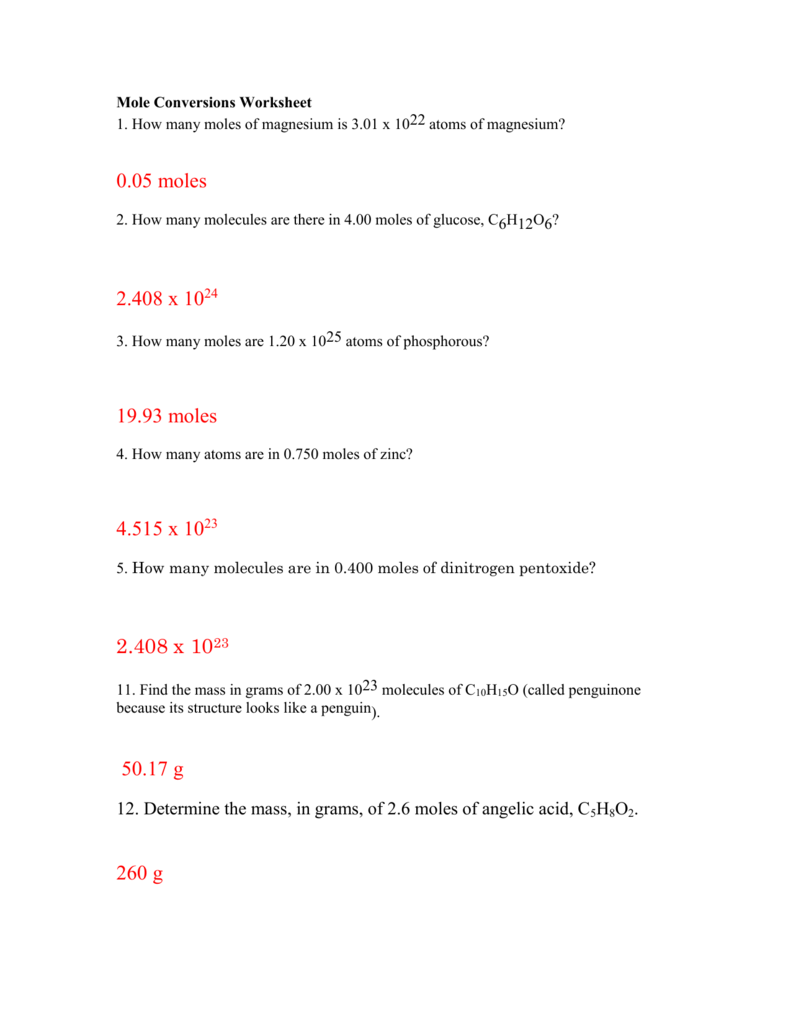5 Easy Steps for Molar Conversion Mastery

Understanding molar conversion is essential for anyone studying chemistry or working in chemical sciences. Whether you're dealing with mole calculations in a lab setting, theoretical exercises, or preparing for a chemistry exam, mastering these conversions can greatly simplify your work. This post will guide you through 5 easy steps to achieve molar conversion mastery.
Understanding the Mole

Before diving into molar conversions, it’s crucial to understand what a mole is. A mole (mol) is a unit in the International System of Units (SI) that measures the amount of substance. One mole contains exactly 6.022 x 1023 entities (atoms, molecules, ions, or electrons), which is known as Avogadro’s number. This number allows us to count particles much like we count items in bulk.

Step 1: Use Molar Mass

The molar mass of a substance is its mass per mole. Here’s how to use molar mass in conversions:
- Locate or calculate the molar mass: If not provided, use a periodic table to find the atomic or molecular weight of each element and sum it up according to the compound’s formula.
- Convert grams to moles or vice versa by dividing the mass of the substance by its molar mass. Use this formula: moles = mass (g) / molar mass (g/mol).
✅ Note: Always double-check your calculations to ensure accuracy. Small mistakes can lead to significant errors in lab results or academic scores.
Step 2: Converting Volume to Moles

When dealing with gases, you can convert volume to moles using:
- The Ideal Gas Law: PV = nRT, where n represents the number of moles.
- Standard Temperature and Pressure (STP): At STP (0°C, 1 atm), 1 mole of an ideal gas occupies 22.4 liters. Use this for conversions if your conditions match STP.
Formula for volume to mole conversion at STP: moles = volume (L) / 22.4 L/mol
Step 3: Molarity Calculations

Molarity (M) is the number of moles of solute dissolved in a liter of solution. Here’s how to calculate molarity:
| Formula | Molarity (M) = moles of solute / volume of solution (L) |
|---|---|
| To Find | Moles: moles = Molarity (M) x volume (L) |
| Example | If you have 2 liters of 0.5 M NaCl solution, then moles = 0.5 M x 2 L = 1 mol NaCl. |

Step 4: Dimensional Analysis

Dimensional analysis, also known as the factor-label method, simplifies unit conversions. Here’s how to use it:
- Set up your calculation so that units cancel out, leaving you with the desired unit.
- For instance, to convert grams to moles:
grams → moles: grams x (1 mol / molar mass (g)) = moles
This method is invaluable for solving complex problems efficiently.
Step 5: Practice with Common Conversions

Finally, practice is key to mastery. Here are some common conversions to get you started:
- Grams to moles: Divide mass by molar mass.
- Liters (at STP) to moles: Divide volume by 22.4 L/mol.
- Moles to atoms/molecules: Multiply moles by Avogadro’s number.
Regular practice with different scenarios will build your proficiency in molar conversions.
Recapitulating these five steps will solidify your understanding and application of molar conversions. Understanding the mole, using molar mass, handling gaseous volumes, calculating molarity, and mastering dimensional analysis all contribute to your mastery. Regularly practicing these techniques will not only help in academic settings but also prove invaluable in practical laboratory environments where precise measurements are crucial.
Why is understanding the mole important in chemistry?

+
Understanding the mole is fundamental because it allows chemists to count particles on a scale where direct counting would be impractical. It provides a bridge between the microscopic world of atoms and molecules and the macroscopic quantities we measure in labs or industry.
Can I use these steps for any substance?

+
Yes, these steps can be applied to any substance provided you know its molar mass. The principles of conversion are universal in chemistry.
What if the gas is not at STP?

+
If the gas is not at STP, you’ll need to use the Ideal Gas Law (PV = nRT) to account for changes in temperature, pressure, and volume when converting between volume and moles.
How do I know if my molarity calculation is correct?

+
To ensure your molarity calculation is correct, check if the units cancel out properly during the calculation, and your solution’s concentration should make sense in context with the amount of solute and volume of the solvent used.



